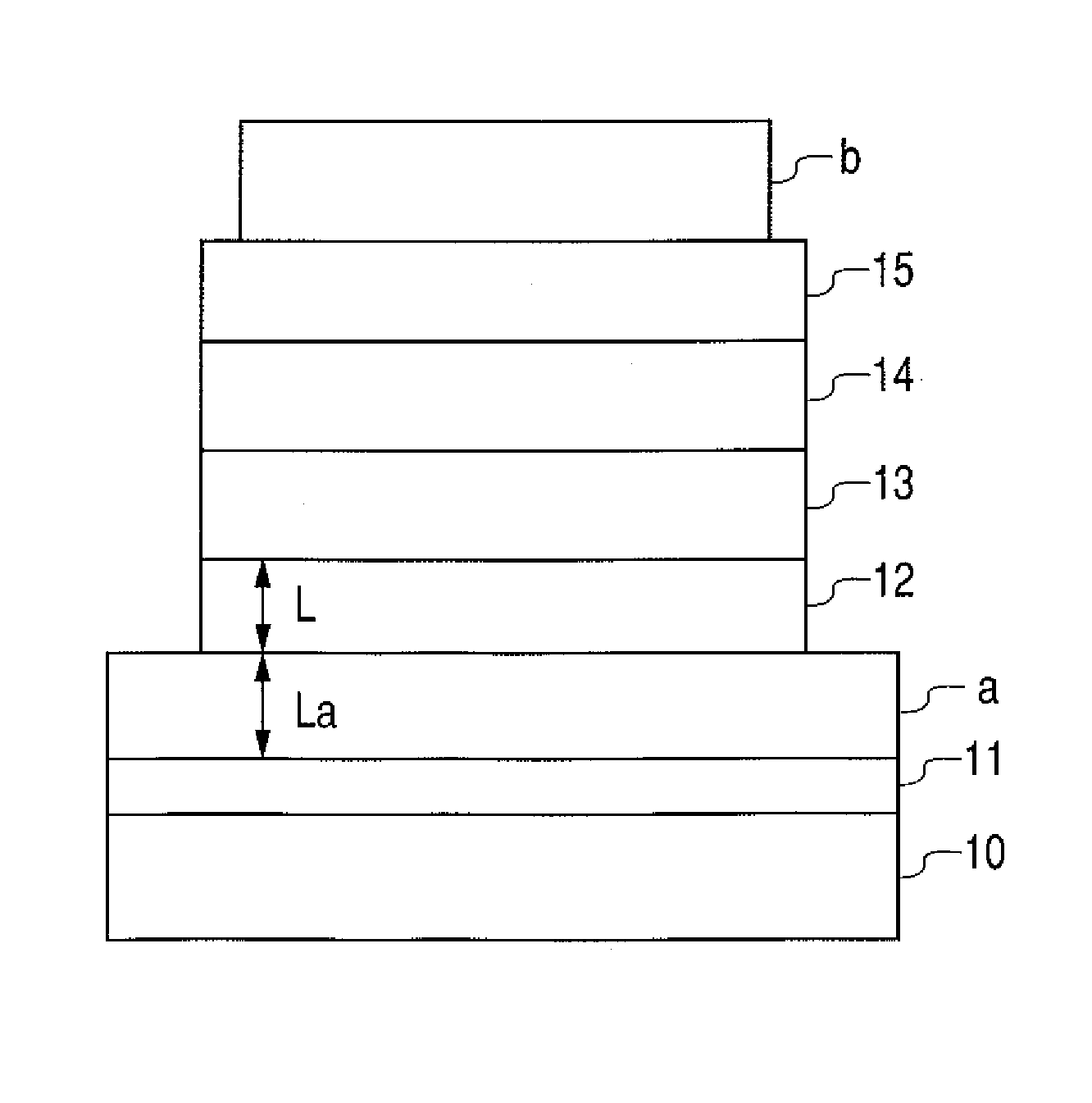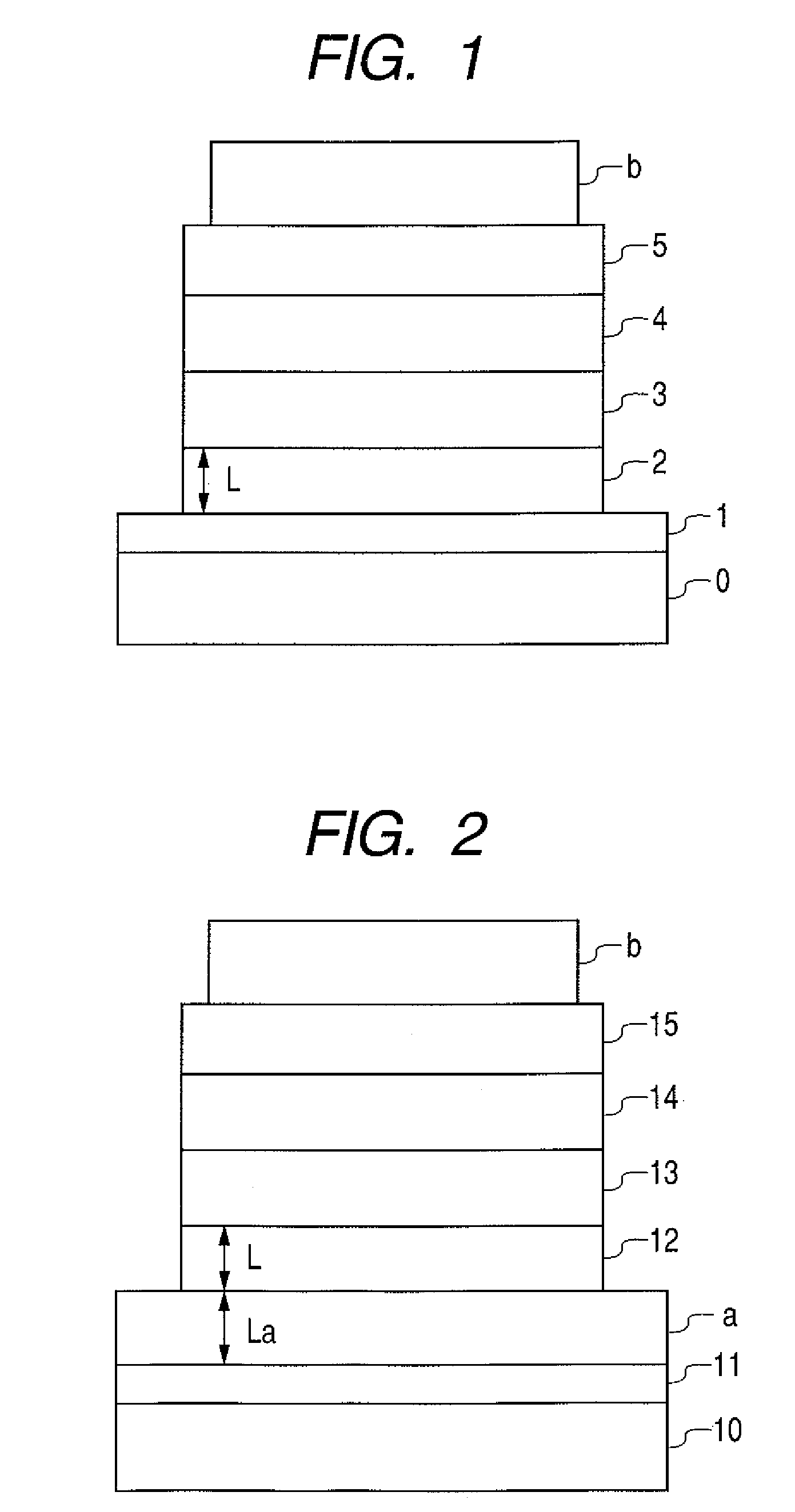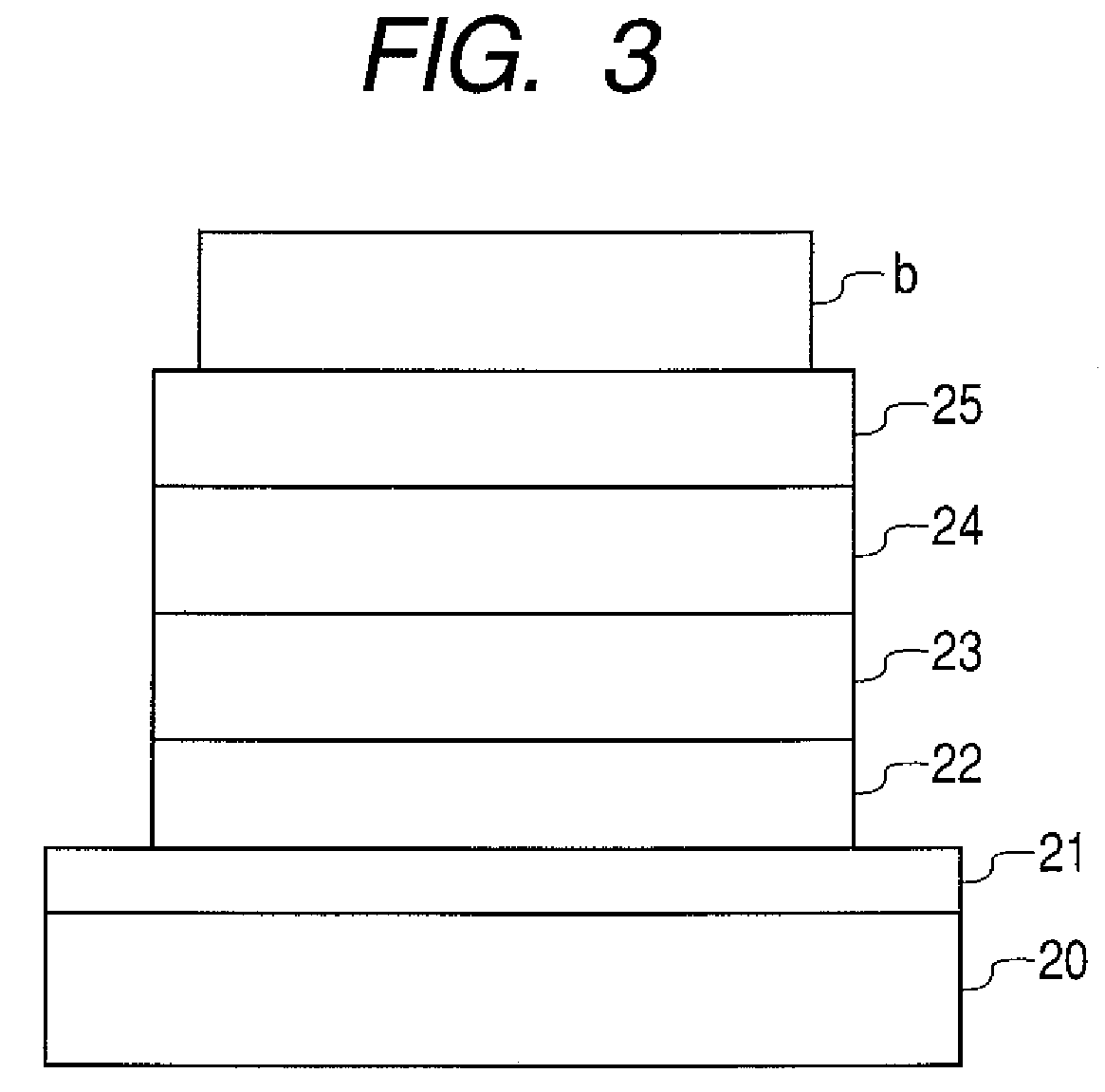Multi-color display apparatus
a multi-color display and apparatus technology, applied in the direction of discharge tube luminescnet screen, discharge tube/lamp details, organic semiconductor device, etc., can solve the problems of reducing the internal quantum efficiency, and reducing the light-extraction efficiency, so as to improve the apparent deterioration of a durable luminance, and improve the light-extraction efficiency
- Summary
- Abstract
- Description
- Claims
- Application Information
AI Technical Summary
Benefits of technology
Problems solved by technology
Method used
Image
Examples
example 1
[0057]Example 1 and Comparative Example 1 show a manufacturing procedure of a multi-color display apparatus using the organic light-emitting devices each having the top-emission structure as shown in FIG. 2 in which the reflection electrode is made of Cr, and measured device characteristics thereof.
[0058]A substrate obtained by forming TFTs, circuits, Cr anodes (reflection electrodes), a planarizing film, a device isolation film, and the like on a glass and provided with an electrode for multi-color display which is capable of performing 200-ppi display (reference numerals 10 and 11 in FIG. 2) was subjected to UV / ozone cleaning.
[0059]Subsequently, the cleaned substrate and materials were set in a vacuum vapor deposition apparatus (produced by ULVAC KIKO, Inc.) and the vacuum vapor deposition apparatus was evacuated to 1×10−6 Torr. After that, N,N′-α-dinaphthyl-benzidine (α-NPD) was deposited on the reflection electrode 10 to form the hole transport layer 12 with a film thickness of ...
example 2
[0085]Example 2 and Comparative Example 2 show a manufacturing procedure of a multi-color display apparatus using the organic light-emitting devices each having the top-emission structure as shown in FIG. 3 in which the reflection layer is made of Ag and the transparent electrode “a” (anode) is made of IZO, and measured device characteristics thereof.
[0086]A substrate obtained by forming TFTs, circuits, Ag films serving as the reflection layers, IZO films (anodes) each having 20 nm serving as the transparent electrodes “a”, a planarizing film, a device isolation film, and the like on a glass and provide with an electrode for multi-color display which is capable of performing 200-ppi display (reference numerals 20 and 21 and reference symbol “a” in FIG. 3) was subjected to UV / ozone cleaning.
[0087]After that, a multi-color display apparatus was produced in the same manner as in Example 1, except that α-NPD was deposited to form the hole transport layer 22 with a film thickness of 10 n...
example 3
[0106]Example 3 and Comparative Example 3 show a manufacturing procedure of a multi-color display apparatus using the organic light-emitting devices each having the top-emission structure as shown in FIG. 3 in which an Ag thin film was used as the light extraction electrode “b” located on a light extraction side, and measured device characteristics thereof.
[0107]A multi-color display apparatus was produced in the same manner as in Example 2, except that a film of Ag with a film thickness of 30 nm was formed as the light extraction electrode “b”. The same measurement as that in Example 1 was performed.
[0108]A relationship between the film thickness of the reflection side and the wavelength is the same as that in Example 2. The film thicknesses and structures of the devices of Example 3 and the results obtained by measurement thereof are summarized in Table 1.
[0109]Although the initial light-extraction efficiency of the devices of Example 3 was not so high, the produced multi-color di...
PUM
 Login to View More
Login to View More Abstract
Description
Claims
Application Information
 Login to View More
Login to View More - R&D
- Intellectual Property
- Life Sciences
- Materials
- Tech Scout
- Unparalleled Data Quality
- Higher Quality Content
- 60% Fewer Hallucinations
Browse by: Latest US Patents, China's latest patents, Technical Efficacy Thesaurus, Application Domain, Technology Topic, Popular Technical Reports.
© 2025 PatSnap. All rights reserved.Legal|Privacy policy|Modern Slavery Act Transparency Statement|Sitemap|About US| Contact US: help@patsnap.com



